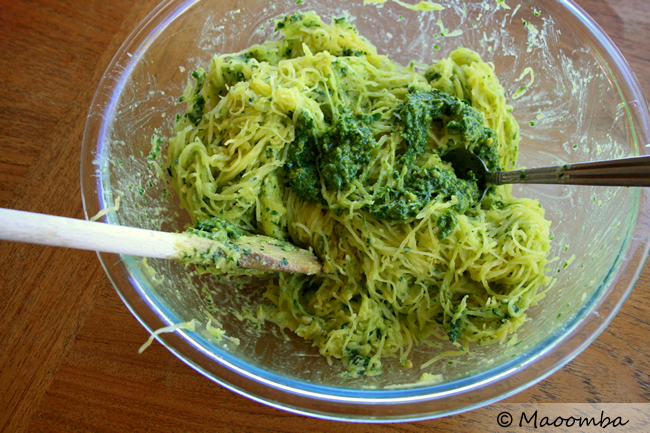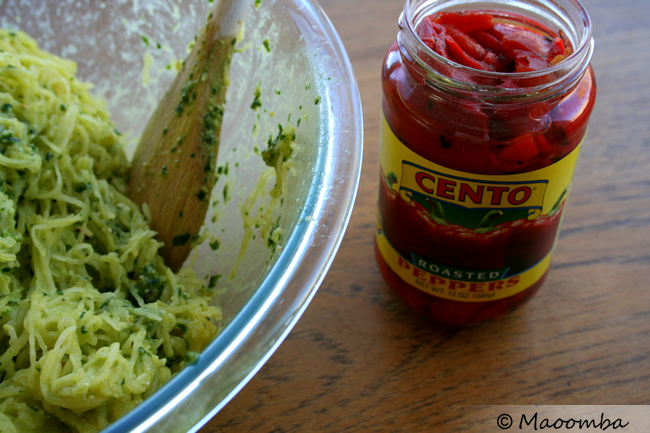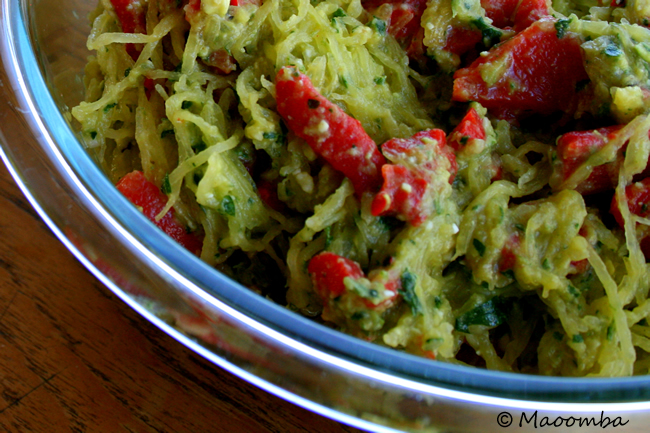Pesto – from the Italian word pestare…to pound or crush (which is how it is typically made) – is a powerfully good thing. While the original is a mélange of garlic, basil, pine nuts, cheese, olive oil, pesto can be made with just about any fresh, leafy herbs and raw nuts.

Italian parsley, shelled pistachios,and roasted (instead of raw) garlic were what I had on hand, so that’s what I used. It was tangy and a bit pungent! Of course, I had added way too much garlic – a tendency that my husband and I share. For the recipe below, I cut it down. My advice: start with one clove and let the pesto sit for a few minutes before tasting so that the flavors have a chance to blend. If it’s not strong enough for you, add more.
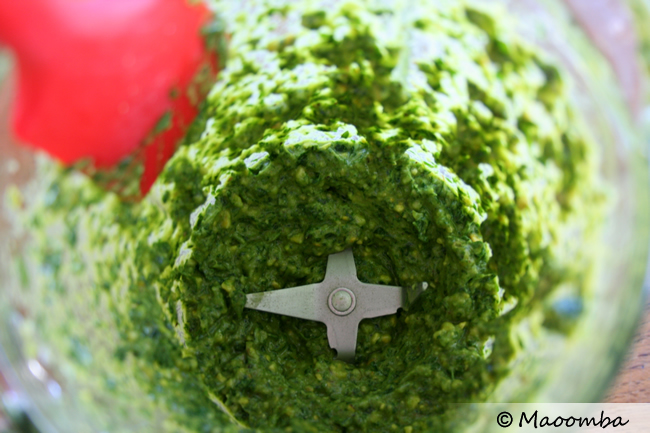
The only real tricks to making blender pesto are that you should wait to mix the oil in after all other ingredients are combined and that you will need to occasionally scrape down the sides to make sure that everything blends together well.
To store it for a while, place the pesto in an airtight container, cover the top of the pesto with olive oil (it seals in flavor and freshness), and refrigerate it.
Parsley Pistachio Pesto + Spaghetti Squash
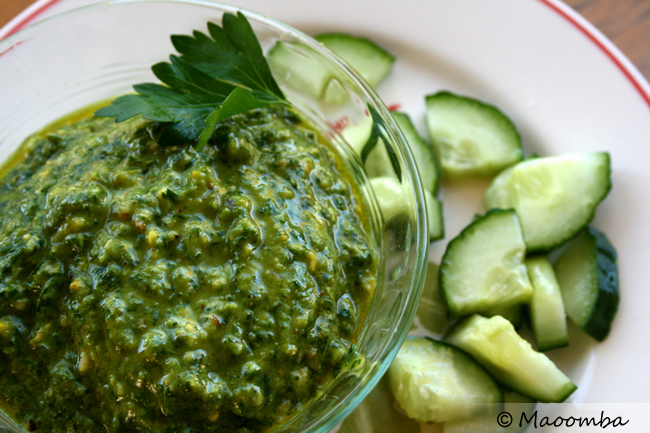
Ingredients
- 1 bunch Italian parsley, washed, dried and de-stemmed
- ½ cup shelled, raw pistachios (or pine nuts)
- 1 clove of garlic (to start. Add more if you like.)
- 2 Tbsp fresh-squeezed lemon juice
- ½ tsp salt
- Fresh ground black pepper to taste
- ⅓ cup extra virgin olive oil
Instructions
- Add all ingredients except olive oil to blender or food processor. Chop all ingredients until well blended – it will have a coarse texture.
- Add the olive oil and blend again to incorporate everything.
- Use immediately or store in the fridge in an airtight container – covering the pesto with a layer of olive oil to keep ingredients fresh.
You can use the pesto in spaghetti squash, as a coating for broiled fish, as a dip with raw vegetables, or in any other recipe calling for pesto.
We ended up mixing a cup of the pesto into roasted spaghetti squash, with roasted red peppers and onions. The next day I topped off leftovers with some cooked shrimp. Very easy and very good, although I think a basil pesto would have worked better with the peppers.